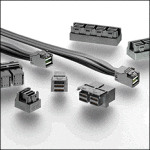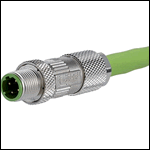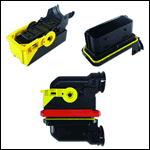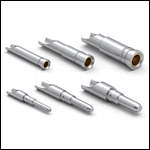Cyber and Physical Worlds Merge in Connected Industry
Cyber and physical worlds merge in connected industry to radically alter industrial production.
 Until today, industrial facilities have largely followed a simple concept – that of automated tasks being performed by automated devices that are connected to a central controller. That’s it; nothing more is necessary for industrial production. The network is merely the vehicle for the industrial Ethernet fieldbus, and from the perspective of automation, this is understandable and sufficient.
Until today, industrial facilities have largely followed a simple concept – that of automated tasks being performed by automated devices that are connected to a central controller. That’s it; nothing more is necessary for industrial production. The network is merely the vehicle for the industrial Ethernet fieldbus, and from the perspective of automation, this is understandable and sufficient.
Industry 4.0, however, places new demands on network technology and by extension on connection technology; production in Industry 4.0 needs to be more effective, more flexible, and more powerful. Control functions shift from a central controller to the system itself. This requires a radical conceptual change in the structure of production facilities in which a strictly hierarchical system gives way to a decentralized one. Plans and systems are constructed in modular form, while control tasks are relocated in the system itself. The network becomes the crucial component.
Industry 4.0 at the Field Level
For something that sounds so simple and logical, the implementation depends on a number of conditions, among which the integration of cyber-physical systems (CPS) with the material world of production is central.
Industry 4.0 is characterized by the integration of CPS into IT applications. This integration should be as flexible as possible, meaning that the rigid arrangement employed in conventional production is compartmentalized, with two areas that need to be melded together.
The initial implementations reveal that the crucial interface lies between the autonomous system modules. These may be of conventional design, i.e. with central controller and decentralized I/O, but they can also be constructed from CPS. In any case, what distinguishes them is that the modules perform a completely self-contained service on the real object in the production process. The set-up of the modules can still be performed conventionally without compromising the advantages of Industry 4.0.
Modules at a production facility must be integrated into the production process at different locations in an extremely quick and easy fashion, and different modules must be deployed at these sites. These two key requirements mean that cabling takes on a new character. Deployment at varying locations becomes the basic setup, while its use with various modules means it constitutes a basic service. Cabling is transformed into an infrastructure.
The Infrastructure of Industry 4.0 Manufacturing
Smart factory infrastructure is currently in the definition phase. Ethernet will be used both for IT as well as automation. In addition, office buildings will employ application-neutral cabling according to ISO/IEC 11801, the standard which provides specifications for setting up passive network infrastructure.
If one applies this to a production plant, it will require integration of different modules into the network. In addition, all the lifelines that supply industry need to be considered, e.g., communications, 400V power, compressed air, auxiliary power, and other signals.
Consequently, the required connections are numerous, which means that simple plug-and-play will only be possible when the connections are integrated in one interface, i.e. in one connector. The standardization of the module interface will be a decisive step. Still, infrastructure development requires more. In the case of industrial production, the module interface must be capable of offering a wide variety of functions in order to ensure simple and – above all – more secure operation. In addition to the module connector interface, this includes management with respect to diagnosis, identification of modules, energy measurement and switching, protection for power (400V), as well as safety and real-time communication. These functions can be ensured by using active network components.
[hr]
Author Andreas Huhmann is a strategy consultant for connectivity and networks for the HARTING Technology Group.






